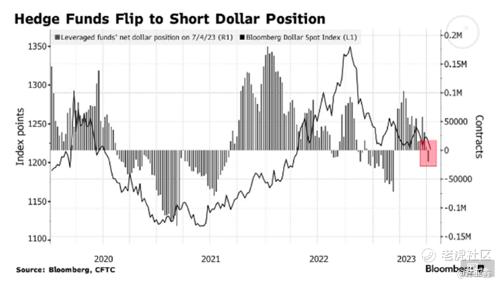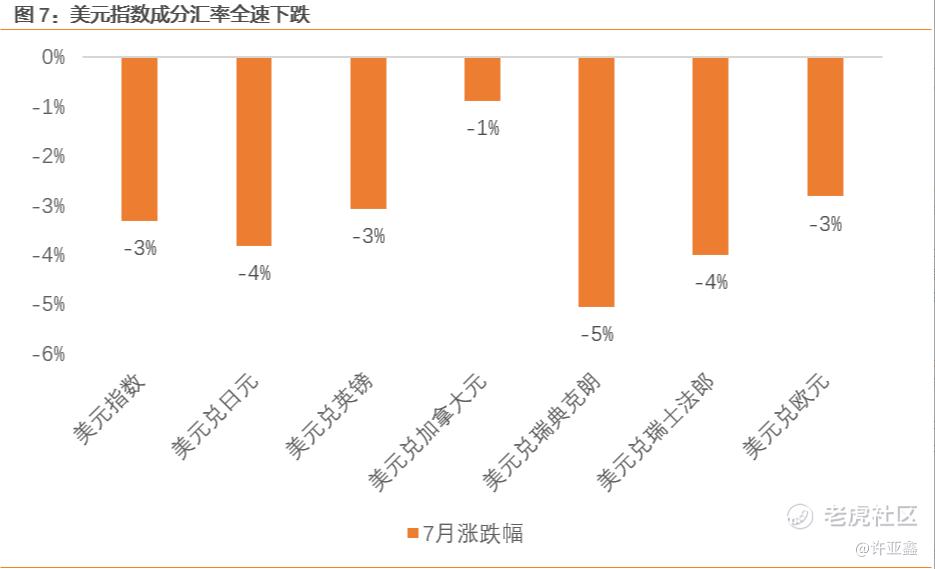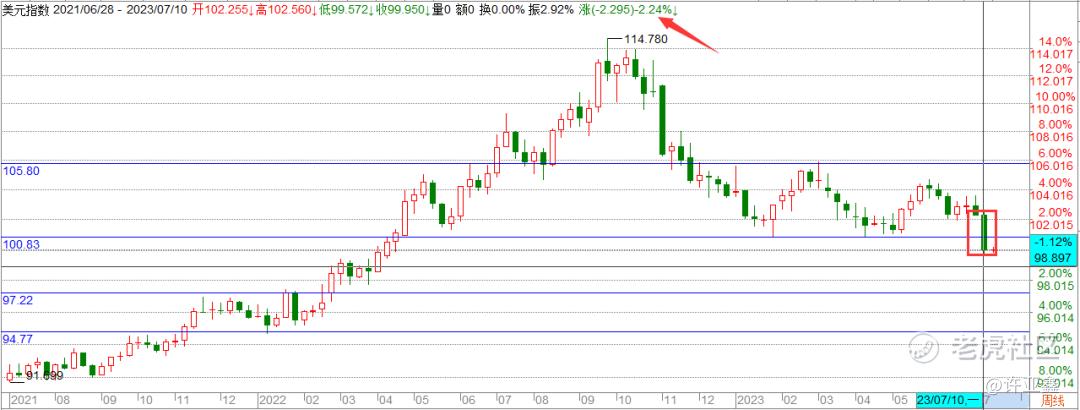According to the Commodity Futures Trading Commission (CFTC),Hedge funds became net sellers of dollars last week for the first time since March, which means that the market has started voting with real money .
This is why I want to remind you earlier that commodities should transition from rebound to reversal, and one of the main factors contributing to the rebound of Big A share is the break of the US Dollar Index.

The US Dollar Index fell 2.24% last week, with the dollar losing the most against the Swedish kronor, Swiss franc and Japanese yen. The contribution of the euro, which has the highest weight, to the US Dollar Index's depreciation is basically close to its weight.
In Europe, the reason for the higher euro/US dollar is the poor monetary policy expectations between the two central banks. After the hawks mentioned above leave office, it is expected that the Fed will further dovish ,However, the European Central Bank is expected to fight against high inflation, and the potential rate hike space will be larger than that of the Federal Reserve.

In Japan, the market should still be betting that the Bank of Japan will adjust the Yield Curve Control Policy (YCC) this month. Of course, the positive feedback mechanism of the Nikkei 225 Index and the rise of the US dollar/Japanese yen, which I have talked to you before, is evolving into a negative feedback mechanism along with the large-scale liquidation of short positions in Japanese yen.
I believes that,To sum up, there are three factors that contributed to the US Dollar Index's break of 100.
First of all, the non-agricultural employment data is less than expected, and the growth rate of CPI and PPI data slows down, which makes the market think that the future Fed rate hike has insufficient motivation; Secondly, the US Dollar Index's exchange rate is relatively overvalued; Finally, the European Central Bank has strong potential rate hike space and power in the future, which brings downward pressure to the US Dollar Index.

As shown in the weekly line of the US Dollar Index above, the US Dollar Index started a downward trend after hitting the top at 114.78 at the end of September last year. From the beginning of the year to last week, it took more than half a year to fluctuate in the range of 100-105. With the US Dollar Index breaking through 100 last week, this shock can be defined as "falling relay". From the perspective of the Japanese line, the US Dollar Index's change window is located on July 19th.
However, even if there is a technical counter-pumping in the successful change, the high probability is that after breaking the position last week, the breaking position will be "confirmed" this week,For some time to come, we will maintain the view of bearish and shorting the US dollar, that is, bullish and bullish commodities and non-US currency.
-END-
NQ100 Index Main Connection 2206 (NQmain) $$Gold Main 2206 (GCmain) $$Dow Jones Main Link 2203 (YMmain) $$2205 (NGmain) $$WTI Crude Oil Main Line 2206 (CLmain) $
Comments